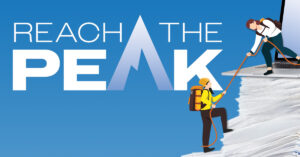The “loan officer’s dream” is getting closer to reality — consistent, quick, pain-free loan decisions and closings, regardless of swings in volume. How quickly this dream is achieved may in large part be up to those who work in the mortgage business.
Digital transformation that revolutionizes the origination process has been discussed for years in the mortgage industry. Companies have spent millions of dollars to purchase technology, focus on increasing productivity and enhance the client experience. These investments have provided mortgage professionals with a taste of what’s possible. They also have given insight into the slow pace of digital transformation in the industry.
Consumer demand
Just as importantly, the utilization of POS tools also enabled clients to handle much of the initial loan input process and onboarding. Without question, this “extra pair of hands” on the front end helped the mortgage industry achieve record-breaking productivity rates and financial returns. The remote-application functionality was only the tip of the iceberg in terms of benefits.
The core driver for digital transformation is now in place. Mortgage consumers clearly expect digital options for communication, engagement, speed and accuracy within the origination process. Today, there’s an opportunity to leverage the learned POS lesson, adapt skills and adopt the many digital solutions that now exist. The industry’s technology partners have been busy building tools that are better now than they were last year. These tools will be even better next year — sooner if mortgage professionals themselves allow it.
Many originators have been slow to adopt the digital tools available to them. Competition and client satisfaction are among the concerns cited. Other examples include:
- My clients don’t utilize and/or trust technology.
- Part of my value proposition is packaging and structuring the loan for my clients.
- I don’t want to release control of the transaction.
- Our digital tools are inferior to the competition.
It is commonly noted that consumers usually do not conduct mortgage transactions routinely, because it is an infrequent experience for many of them. Loan originators are important advisers to those who want to purchase or refinance real estate. Although consumers actively purchase goods and services online, a mortgage application involves personal and confidential information that requires strong security.
So, the modern loan originator needs to rely on professionalism and be highly proficient with digital tools to lead a client through a mortgage transaction. In many cases, the borrower and originator will never meet face to face. It all begins with how the originator defines and describes the process. The end goal remains the same: homeownership and an improved financial situation for the client.
Close communication
Strong sales language is critical. Sales professionals have been taught to solve for need, to identify a problem and to present a solution. Many originators provide value by being highly engaged in every step of the transaction. Everyone has their individual style and routine.
Skilled professionals have always provided leadership to their clients by explaining the process, setting goals and timelines, creating accountability for borrower-provided requirements and maintaining close communication. Now, many of these functions can be automated, so originators need to rely on technology for these loan-manufacturing steps.
The direction the originator provides becomes critical for the client. Again, most consumers do not often apply for a mortgage. Clarity and direction have become increasingly important. As an example, one of the easiest ways to reduce documentation is to guide the borrower to automated asset validation when available. Many clients are reluctant as this task requires a password link to a financial institution. Clear guidance and direction from the originator, however, can significantly enhance the process. Similarly, electronic signatures and early review of disclosures and closing documents saves time, reduces error and enhances the client experience.
Interestingly, the largest change in the digital transformation was driven by increased utilization of virtual communication. During the pandemic, daily conversations, meetings and interactions shifted to platforms like Zoom, GoToWebinar and Microsoft Teams. This was a driver for how mortgage companies interfaced internally. It also caused many mortgage professionals to change their communication styles and habits.
During the pandemic, the industry has seen shifts in sales skills through these virtual mediums, as well as changes in apparel and office surroundings. Still, many originators have been reluctant to utilize virtual communication with clients, Realtors and professional referral sources. Over time, these mediums have become increasingly important and many originators have adjusted their communication style to include virtual connectivity with borrowers.
Undoubtedly, this will continue to be a mainstream form of client interaction in the mortgage community. It’s a critical issue because it rehumanizes communication, as noted by video-sharing software company BombBomb, which features a video on this subject on its homepage.
As technology has evolved, so have communication tools. Email inboxes have become large repositories for information that needs to be filtered, sorted or managed daily. Clients respond to communication in other formats such as video, text, or notifications in portals or digital platforms. Mortgage professionals must expand their skill set around these omnichannel communication tools to build better individual relationships.
● ● ●
Ultimately, technology will automate all low-to-moderate-skill loan origination processes. This digital transformation will modernize the consumer experience, reduce the cost to originate a loan and eliminate the capacity challenges that occur much too often.
Will this transformation come from within the mortgage industry or from the outside? Will it come sooner or later? Will the mortgage business achieve the “loan officer’s dream?” Ultimately, the answers to these questions may be largely up to those in the business. ●
-
Ed Adams is senior vice president of retail at Mountain West Financial Inc. He brings 33 years of retail mortgage lending experience to his position. During his extensive career in mortgage banking, Adams has managed a wide variety of production and support functions — including sales, training, appraisals and underwriting — for well-known financial institutions. In his current role, Adams directs the company’s retail mortgage lending efforts across its existing footprint and expands it into new areas of opportunity.
View all posts





